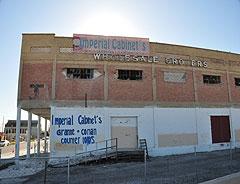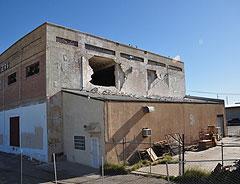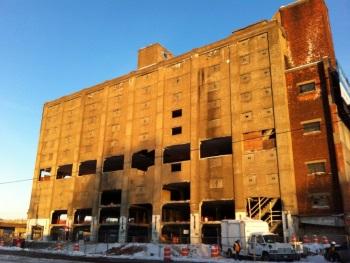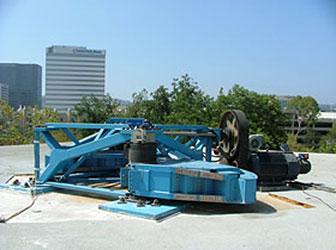Pre/Post Earthquake Damage Assessment of RC Buildings
Research Team: Babak Moaveni (co-PI at Tufts), Andreas Stavridis (PI, University at Buffalo)
Funding: NSF (1430180)
Duration: 9/2012 – present
Relevant publications to date:
Moaveni, B., Stavridis, A., Lombaert, G., Conte, J.P., and Shing, P.B. (2013). "Finite element model updating for assessment of progressive damage in a three-story infilled RC frame." Journal of Structural Engineering, ASCE, 139(10), 1665-1674.
As the first part of this project, a 10- story concrete building, shown in Figure 1 was subjected to a series of shake tests in order to study the behavior of structure under lateral loads. This experiment was done by the aid of mobile shaker owned and operated by NEES@UCLA in January and February 2014. The research team was able to induce gradual damages to the infill walls of the building, which simulated the damage buildings may experience due to extreme events such as earthquakes. After each stage, the structure was subjected to forced vibration using mentioned mobile shaker performing both sine sweeps from 1-10 Hz and sine dwells at identified resonant frequencies. This operation was repeated for both the X direction (North-South) and Y-Direction (East-West).
Data was recorded for about a week. The data includes ambient vibration recordings, well as the structural response to shaking tests. Data from accelerometers will be analyzed using system identification techniques in order to obtain mode shapes, frequencies, and damping.
Figure 1. Ten-story warehouse structure in Utica, NY that was tested in February 2014.
In the second phase of the project, the research team plans to dynamically test in the field an existing two-story reinforced concrete frame building infilled with unreinforced masonry walls as shown in Figure 2. The building, located in El Centro, CA, was built in the 1920s and it is typical of the construction practice in California in that era. Buildings with similar characteristics are located in regions with high seismicity such as Los Angeles, San Francisco, the Mediterranean region, and Latin America. Such buildings often have historical significance but they have proved vulnerable to earthquakes. Understanding and improving their behavior has been a challenging task for engineers. The building has sustained damage during earthquakes of 1940, 1979, and 1987 and 2010 which have been recorded in close proximity. The building was repaired and retrofitted after the first three earthquakes; however, the damage induced during the 2010 event cannot be repaired cost-effectively considering the economy in the area. Hence, the structure is scheduled to be demolished. This provides a unique opportunity to test a real life building using mobile shakers (Figure 3). The testing will be incremental and it is expected to bring the building on the verge of collapse. The unique experimental data from the field will enhance our understanding of the complex behavior of these structures and their failure mechanisms, and it will be useful for future analytical, as well as laboratory shake-table studies since it will provide benchmark data for researchers and practitioners involved with earthquake engineering.


Figure 2. West (left) and north (right) elevations of the test bed building located in El Centro, CA
Figure 3. UCLA portable shakers
The data obtained from field testing will be used to validate finite element models and damage identification techniques. The combination of the two tools will allow the derivation of a damage index that can be used to identify the state of a structure prior or after an extreme event.

